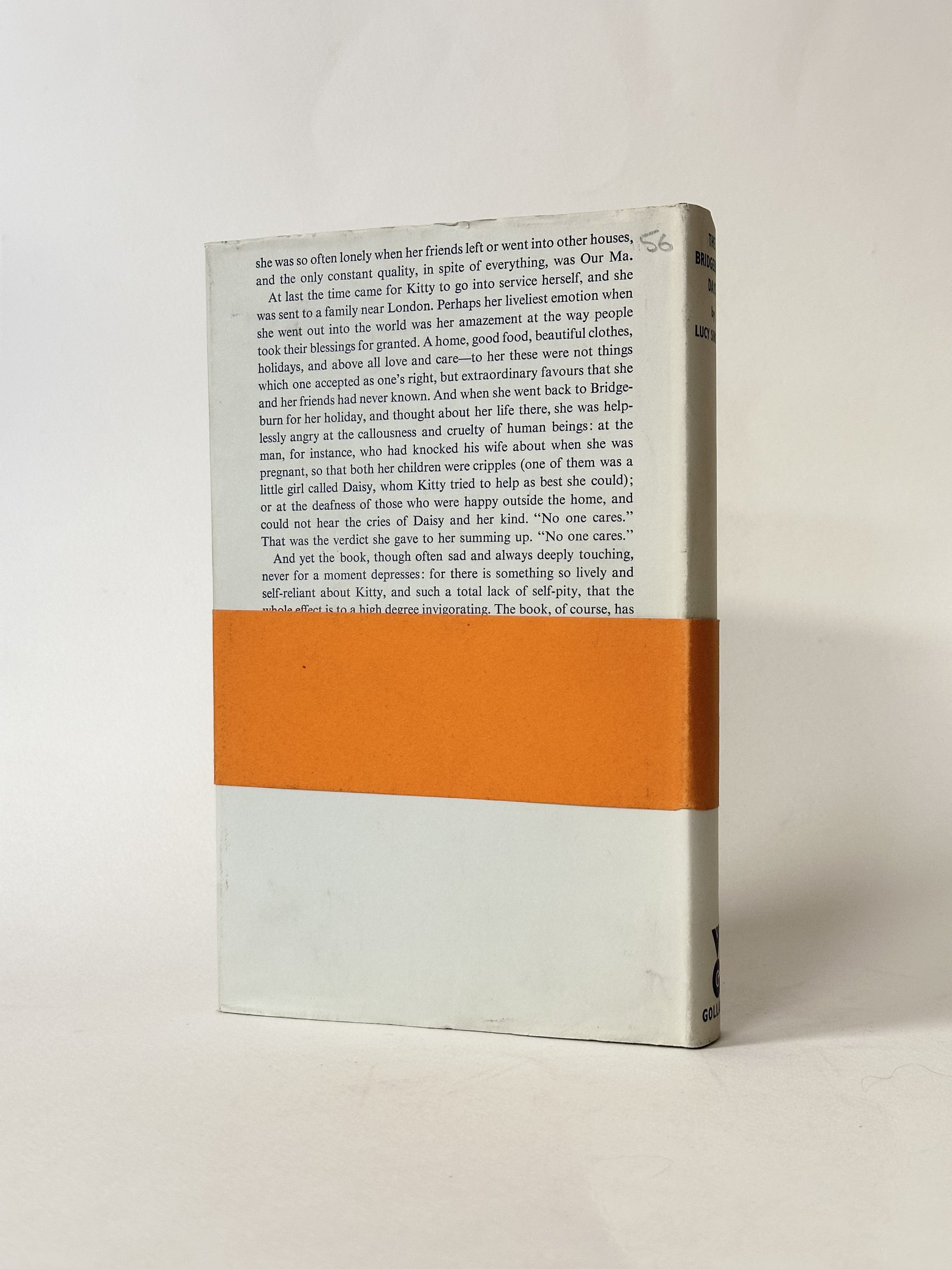 Image 1 of 2
Image 1 of 2

 Image 2 of 2
Image 2 of 2



SINCLAIR, Lucy. The Bridgeburn Days
SINCLAIR, Lucy. The Bridgeburn Days. London: Gollancz. 1956. 8vo. First edition. Publisher’s blue cloth lettered in gilt to the spine, in the dust jacket and the publisher’s bellyband. An excellent example, the publisher’s retained copy with one ‘archive copy’ stamp to the title page. The cloth clean and bright, the binding tight and square, the contents clean and fine throughout. The dust jacket unclipped (16/- net), gently rubbed to corners and tips, but minor, and the belly band with small closed tear to fore-edge.
A long-forgotten novel, never reprinted, by a ghost, Nancy Baty, writing here under the pseudonym Lucy Sinclair. The story depicts life in a foster home in northern England, the fictional Bridgeburn, where girls are prepared for life in domestic service and boys a life on the farm. The story follows the rebellious Kitty, Baty’s alter ego, from a five-year-old, the youngest and bullied by her peers, up to an eighteen-year-old, the oldest and now a bully herself, all the while dominated by ‘a martinet of the old school, a relic of Victorianism’, Our Ma. Nothing can be found of the author—the book itself only appears in a few academic papers on foster care in northern England—but a death record locates her in Oxfordshire in 2002. It’s clear she wanted her story, or rather, the story of children like her, to be told, and this publication at the age of 41, was her only output.
SINCLAIR, Lucy. The Bridgeburn Days. London: Gollancz. 1956. 8vo. First edition. Publisher’s blue cloth lettered in gilt to the spine, in the dust jacket and the publisher’s bellyband. An excellent example, the publisher’s retained copy with one ‘archive copy’ stamp to the title page. The cloth clean and bright, the binding tight and square, the contents clean and fine throughout. The dust jacket unclipped (16/- net), gently rubbed to corners and tips, but minor, and the belly band with small closed tear to fore-edge.
A long-forgotten novel, never reprinted, by a ghost, Nancy Baty, writing here under the pseudonym Lucy Sinclair. The story depicts life in a foster home in northern England, the fictional Bridgeburn, where girls are prepared for life in domestic service and boys a life on the farm. The story follows the rebellious Kitty, Baty’s alter ego, from a five-year-old, the youngest and bullied by her peers, up to an eighteen-year-old, the oldest and now a bully herself, all the while dominated by ‘a martinet of the old school, a relic of Victorianism’, Our Ma. Nothing can be found of the author—the book itself only appears in a few academic papers on foster care in northern England—but a death record locates her in Oxfordshire in 2002. It’s clear she wanted her story, or rather, the story of children like her, to be told, and this publication at the age of 41, was her only output.
